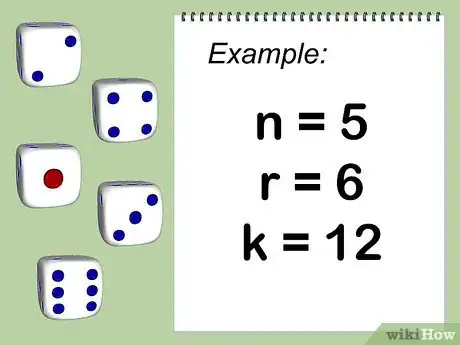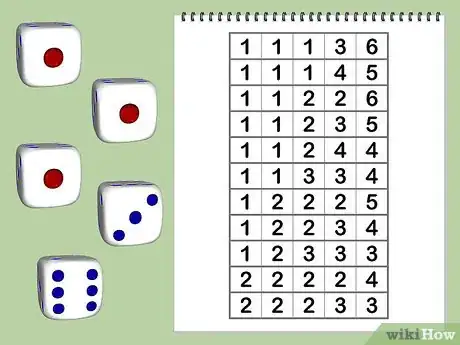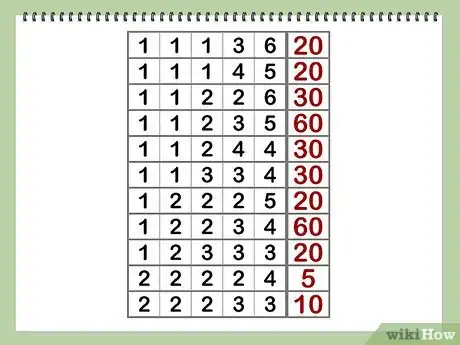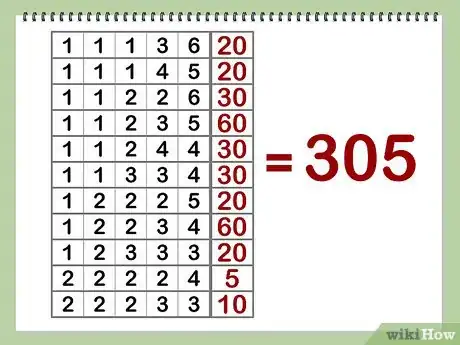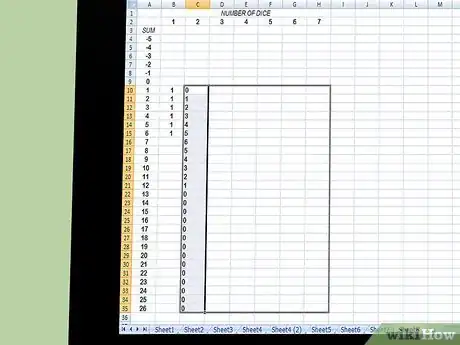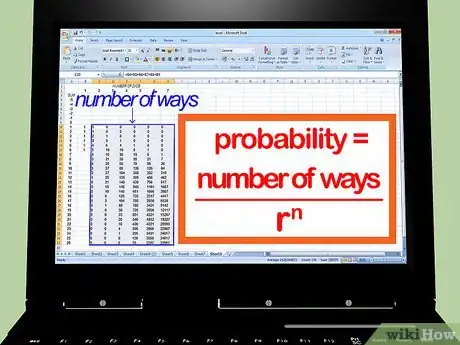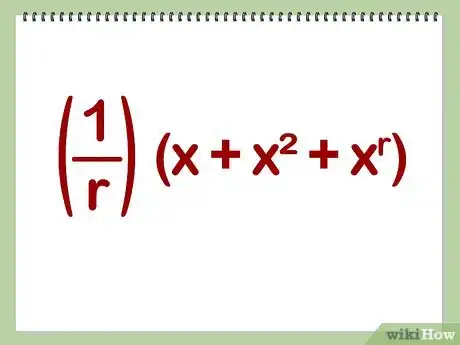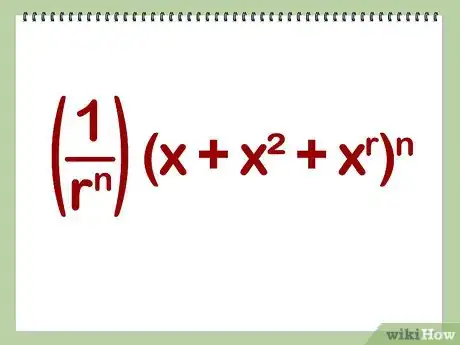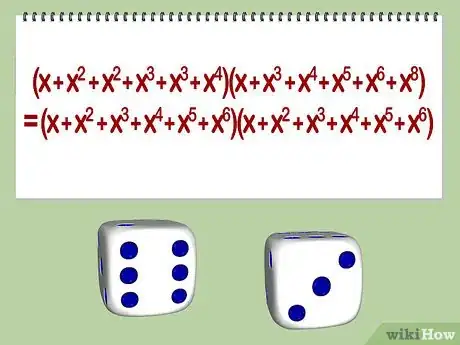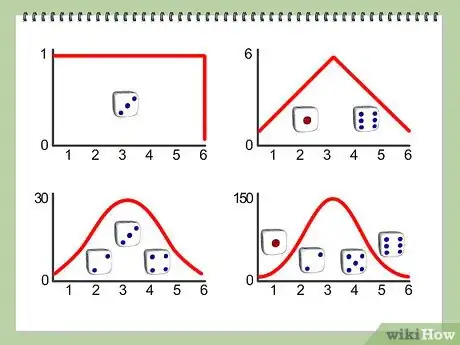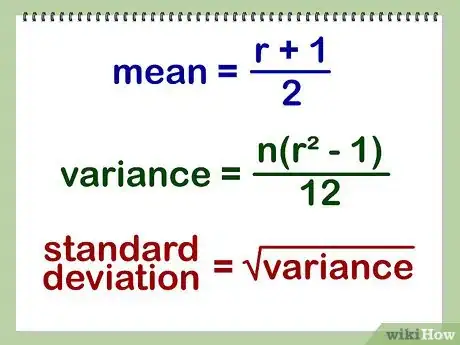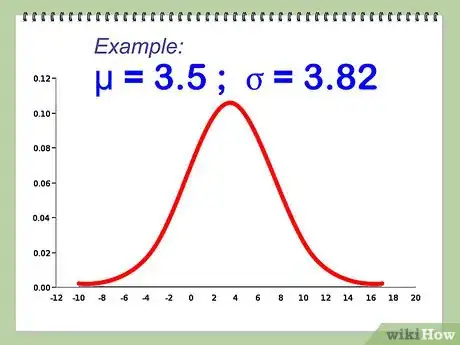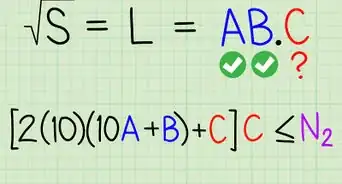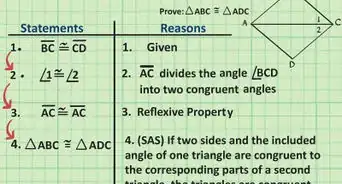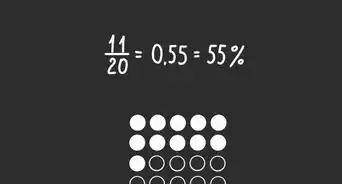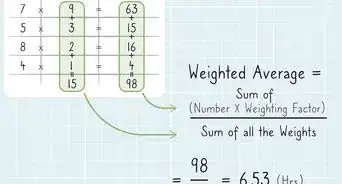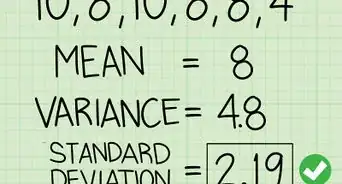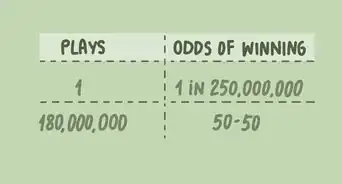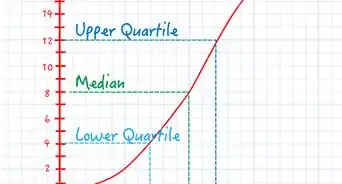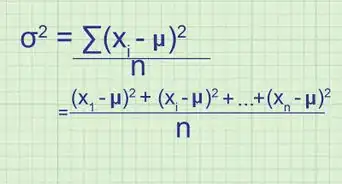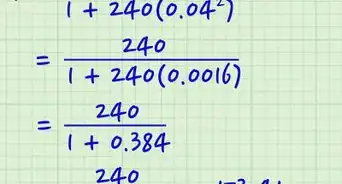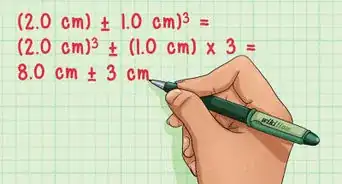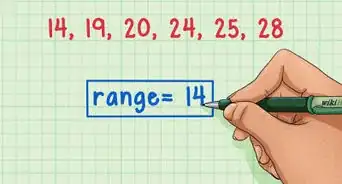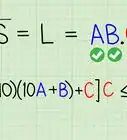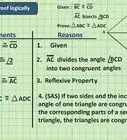wikiHow is a “wiki,” similar to Wikipedia, which means that many of our articles are co-written by multiple authors. To create this article, 26 people, some anonymous, worked to edit and improve it over time.
There are 8 references cited in this article, which can be found at the bottom of the page.
This article has been viewed 274,352 times.
Learn more...
Lots of people think that if you roll three six sided dice, you have an equal chance of rolling a three as you have rolling a ten. This is not the case, however, and this article will show you how to calculate the mean and standard deviation of a dice pool.
Learn the terminology of dice mechanics. Dice are usually of the 6 sided variety, but are also commonly found in d2(Coins), d4(3 sided pyramids), d8(Octahedra), d10(Decahedra), d12(Dodecahedra), and d20(Icosahedra). A dice roll follows the format (Number of Dice) (Shorthand Dice Identifier), so 2d6 would be a roll of two six sided dice. In this article, some formulas will assume that n = number of identical dice and r = number of sides on each die, numbered 1 to r, and 'k' is the combination value.[1] There are several methods for computing the likelihood of each sum.
Steps
Probability Chart
Enumeration
-
1Note the number of dice, their sides, and the desired sum.
-
2Enumerate all the ways that sum can be reached. This can be tedious for large numbers of dice, but is fairly straightforward. This is equivalent to the finding all partitions of k into exactly n parts with no part larger than r. An example for n=5, r=6, and k=12 is shown as an example. In order to ensure that the count is both exhaustive and that no partition is counted twice, the partitions are presented in lexicographic order and the dice in each partition in non-decreasing order.Advertisement
-
3Not all partitions listed in the previous step are equally likely. This is why they must be listed, not simply counted. In a smaller 3 die example, the partition 123 covers 6 possibilities (123, 132, 213, 231, 312, 321) while the partition 114 covers only 3 (114, 141, 411) and 222 only includes itself. Use the multinomial formula to compute the number of ways to permute the digits in each partition. This information has been added to the table from the previous section.[2]
-
4Add the total number of ways to get the desired sum.
-
5Divide by the total number of outcomes. Since each die has r equally probable faces, this is simply rn.
Recursion
This method gives the probability of all sums for all numbers of dice. It can be easily implemented on a spreadsheet.
-
1Note the probabilities of the outcomes of a single die. Record them in a spreadsheet. The example shown uses 6-sided dice. The blank rows for negative sums are treated as zeros and allow the same formula to be used in all rows.[3]
-
2In the column for 2 dice, use the formula shown. That is, the probability of 2 dice showing any sum k equals the sum of the following events. For very high or low values of k, some or all or these terms might be zero, but the formula is valid for all k.
- First die shows k-1 and the second shows 1.
- First die shows k-2 and the second shows 2.
- First die shows k-3 and the second shows 3.
- First die shows k-4 and the second shows 4.
- First die shows k-5 and the second shows 5.
- First die shows k-6 and the second shows 6.
-
3Likewise, for three or more dice, the same formula still applies, using the now known probabilities for each given sum on one die fewer. Thus, the formula entered in step two can be filled both down and across until the table includes as much data as required.
-
4The spreadsheet shown computed "number of ways" not "probability", but converting between them is easy: probability = number of ways / r^n where r is number of sides on each die and n is the number of dice. Alternatively, the spreadsheet can be modified to compute probability directly.
Generating Functions
-
1Write the polynomial, (1/r)(x + x2 + ... + xr). This is the generating function for a single die. The coefficient of the xk term is the probability that the die shows k.[4]
-
2Raise this polynomial to the nth power to get the corresponding generating function for the sum shown on n dice. That is compute (1/rn)(x + x2 + ... + xr)n. If n is larger than about 2, you'll probably want to do this on a computer.
-
3Computationally, this is equivalent to the previous method, but sometimes theoretical results are easier to derive with a generating function. For example throwing two regular 6-sided dice has exactly the same distribution of sums as a die labeled (1, 2, 2, 3, 3, 4) and another labeled (1, 3, 4, 5, 6, 8). This is because (x+x2 +x2+x3+x3+x4)(x+x3 +x4+x5+x6+x8) = (x+x2 +x3+x4+x5+x6)(x+x2 +x3+x4+x5+x6).
Continuous Approximation
-
1For a large number of dice, exact computation by the above methods may be difficult. The central limit theorem states that the sum of a number of identical dice approaches a normal distribution as the number of dice increases.[5]
-
2Compute the mean and standard variation based on the number and type of dice. Assuming n dice numbered 1 to r, the formulas below apply.
- The mean is (r+1)/2.
- The variance is n(r^2-1)/12.
- The standard deviation is the square root of the variance.
-
3Use the normal distribution with the above mean and standard deviation as an approximation of the sum of the dice.
Community Q&A
-
QuestionIf I roll a six-sided die 60 times, what's the best prediction of number of times I will roll a 3 or 6?
 DonaganTop AnswererTogether any two numbers represent one-third of the possible rolls. One-third of 60 is 20, so that's how many times either a 3 or a 6 might be expected to come up in 60 rolls.
DonaganTop AnswererTogether any two numbers represent one-third of the possible rolls. One-third of 60 is 20, so that's how many times either a 3 or a 6 might be expected to come up in 60 rolls. -
QuestionWhat are the odds of rolling 17 with 3 dice?
 Dieyun DingTop AnswererSeventeen can be rolled 3 ways - 5,6,6, 6,5,6, and 6,6,5. There are 6^3=216 ways to roll 3 dice, and 3/216 = 1/72. Therefore, the odds of rolling 17 with 3 dice is 1 in 72.
Dieyun DingTop AnswererSeventeen can be rolled 3 ways - 5,6,6, 6,5,6, and 6,6,5. There are 6^3=216 ways to roll 3 dice, and 3/216 = 1/72. Therefore, the odds of rolling 17 with 3 dice is 1 in 72. -
QuestionWhat is the probability of rolling a total of 4 when rolling 5 dice?
 Community AnswerThat isn't possible, and therefore there is a zero in one hundred chance.
Community AnswerThat isn't possible, and therefore there is a zero in one hundred chance.
Warnings
- Using a pool with more than one kind of die complicates these methods. In this case, the easiest way to determine the probability is usually to enumerate all the possible results and arrange them increasing order by their total.⧼thumbs_response⧽
References
- ↑ http://www.darkshire.net/~jhkim/rpg/systemdesign/dice-motive.html
- ↑ https://perl.plover.com/misc/enumeration/enumeration.txt
- ↑ https://www.youtube.com/watch?v=YUmB0HcGla8
- ↑ http://math.cmu.edu/~cargue/arml/archive/13-14/generating-05-11-14.pdf
- ↑ https://www.khanacademy.org/math/ap-statistics/sampling-distribution-ap/sampling-distribution-mean/v/central-limit-theorem
- http://business.statistics.sweb.cz/normal01.jpg
- http://www.gamedev.net
- http://talkstats.com/
About This Article
To calculate multiple dice probabilities, make a probability chart to show all the ways that the sum can be reached. For example, with 5 6-sided dice, there are 11 different ways of getting the sum of 12. Just make sure you don’t duplicate any combinations. Keep in mind that not all partitions are equally likely. For instance, with 3 6-sided dice, there are 6 ways of rolling 123 but only 3 ways of rolling 114 and 1 way of rolling 111. To work out the total number of outcomes, multiply the number of dice by the number of sides on each die. For 5 6-sided dice, there are 305 possible combinations. For more tips, including how to make a spreadsheet with the probability of all sums for all numbers of dice, read on!

